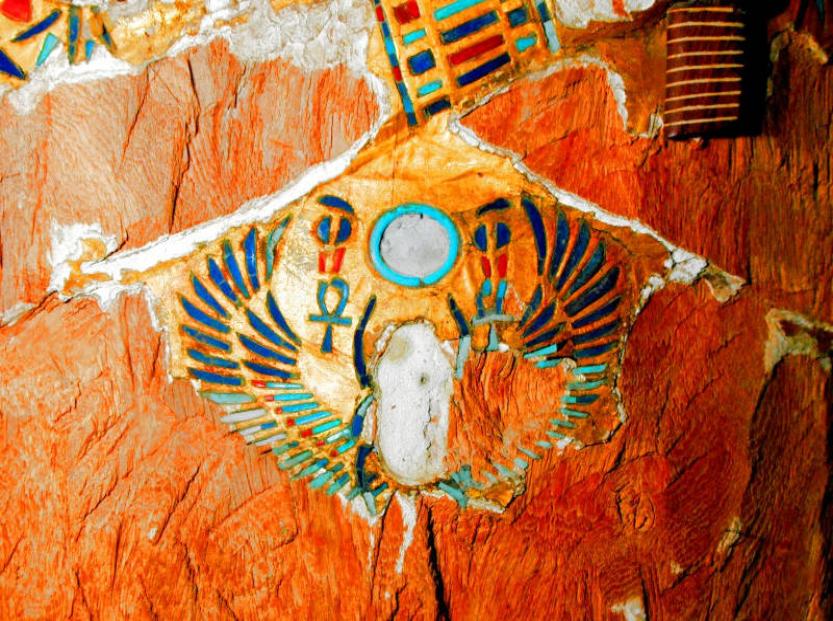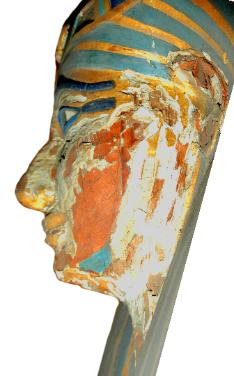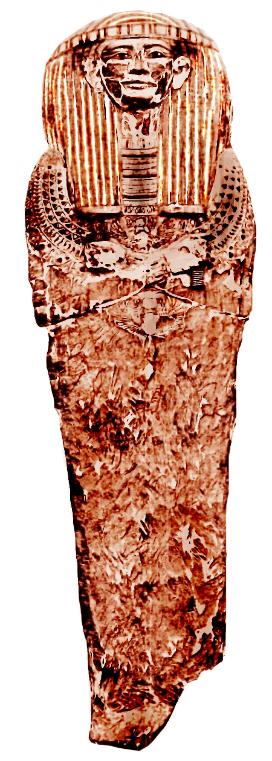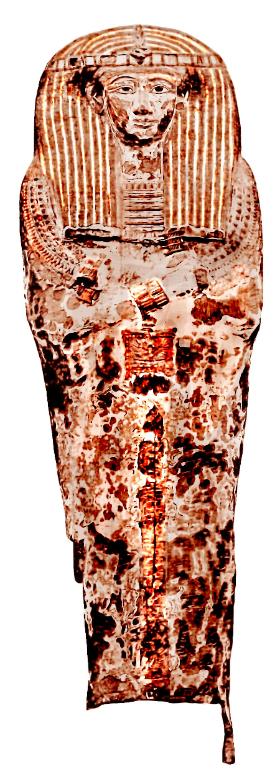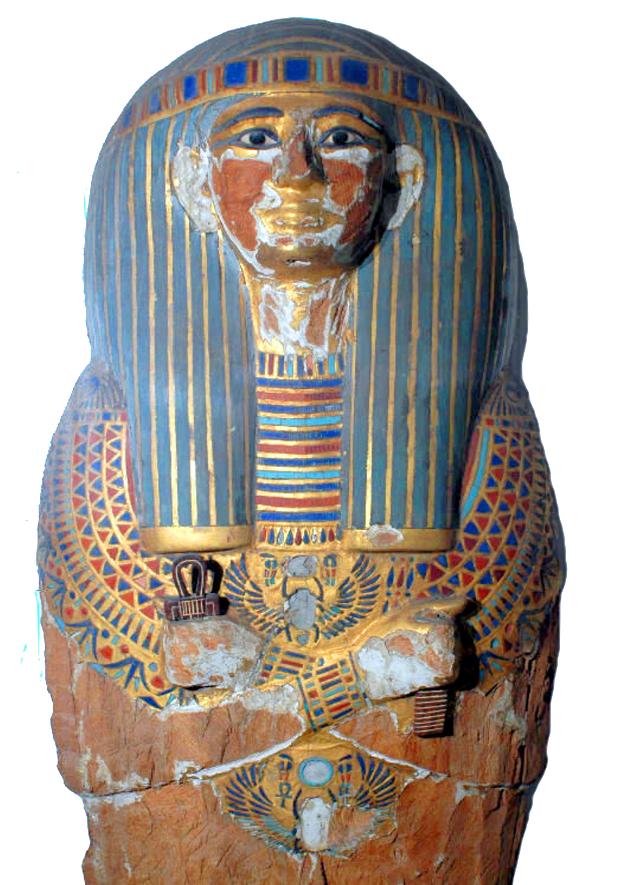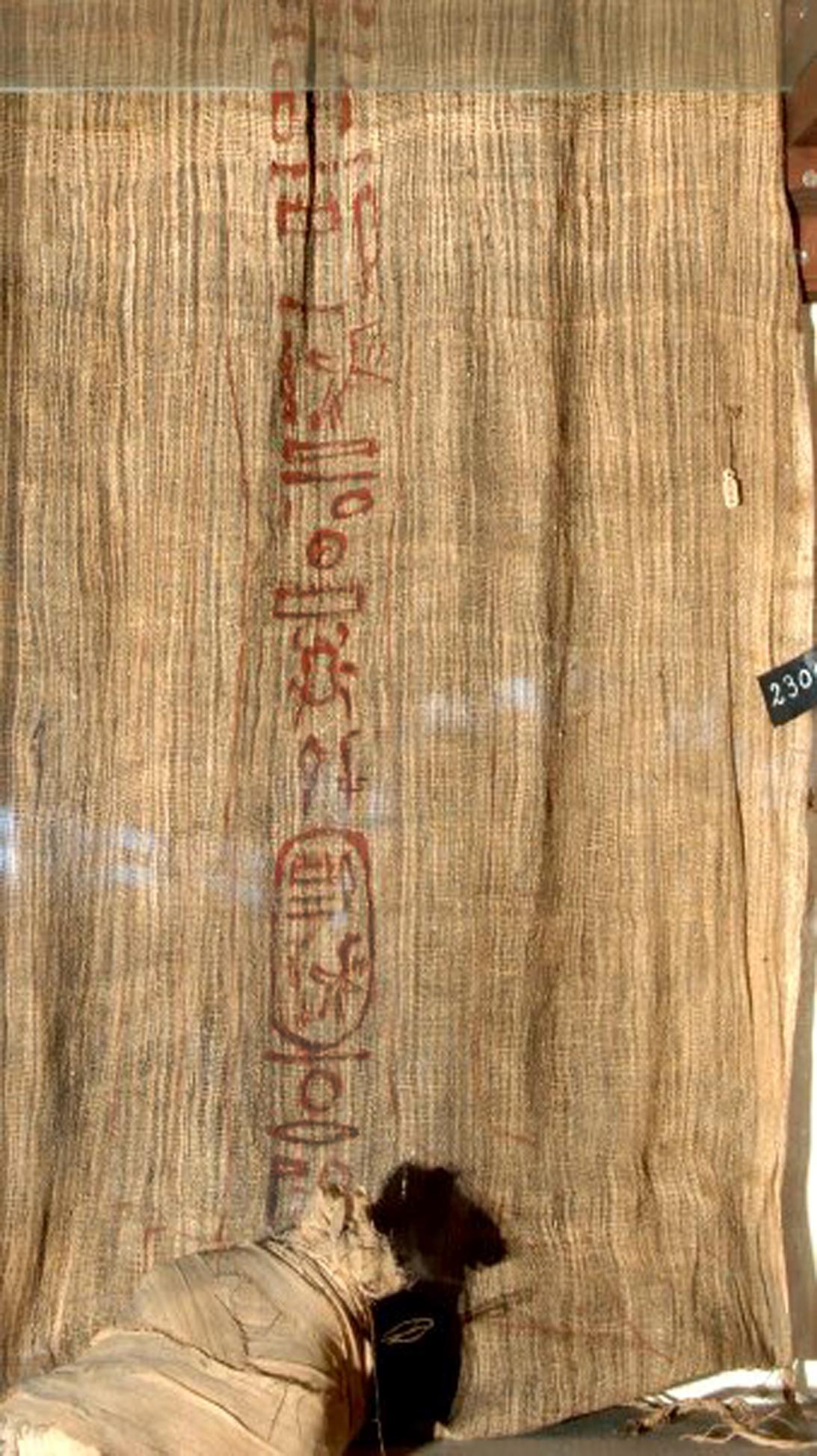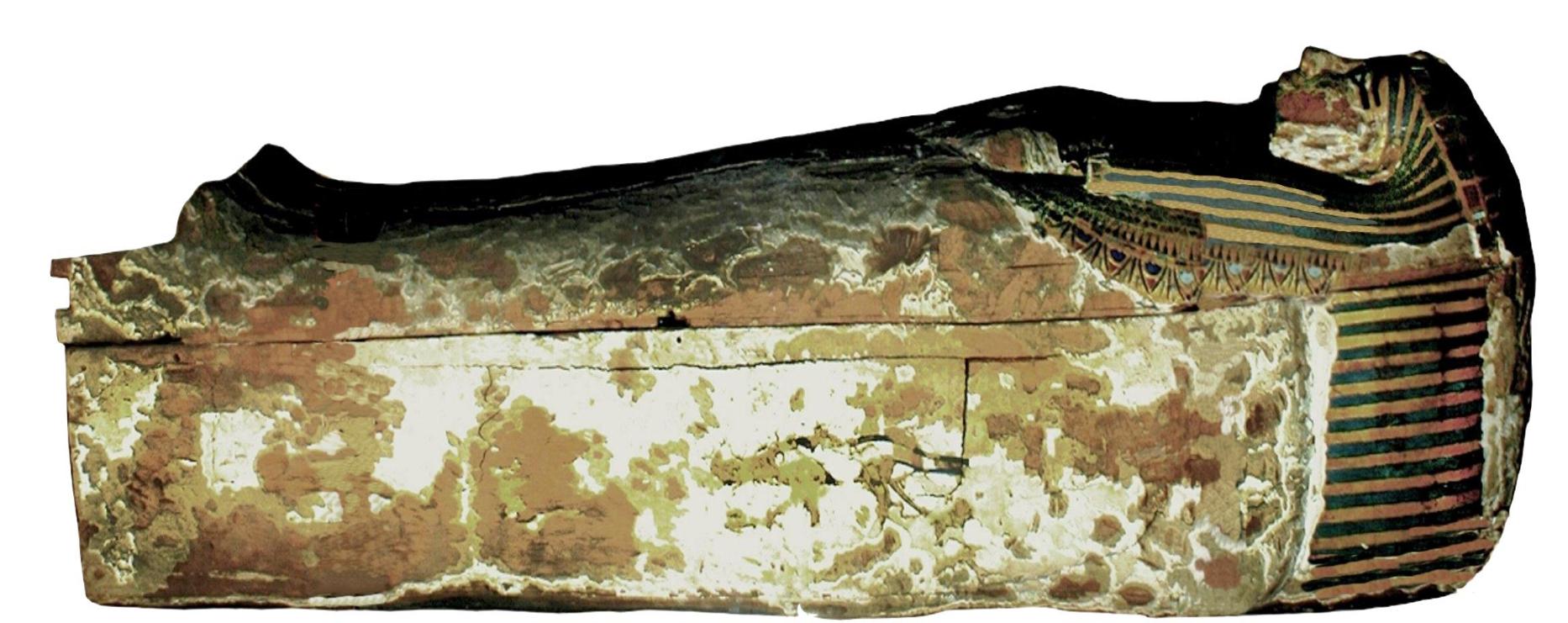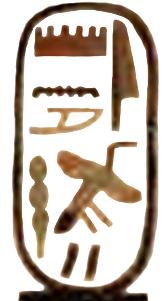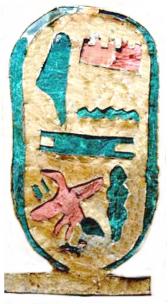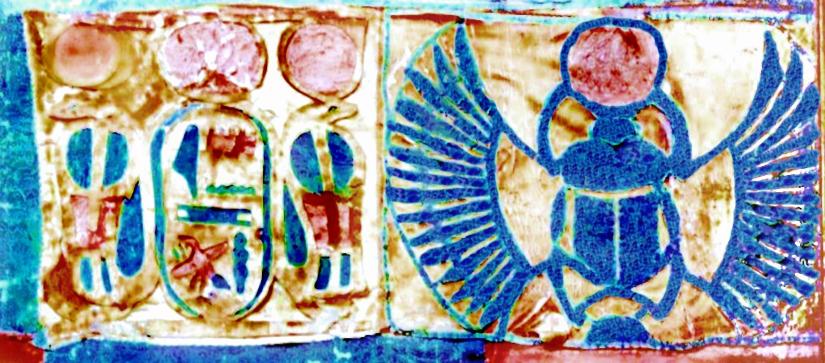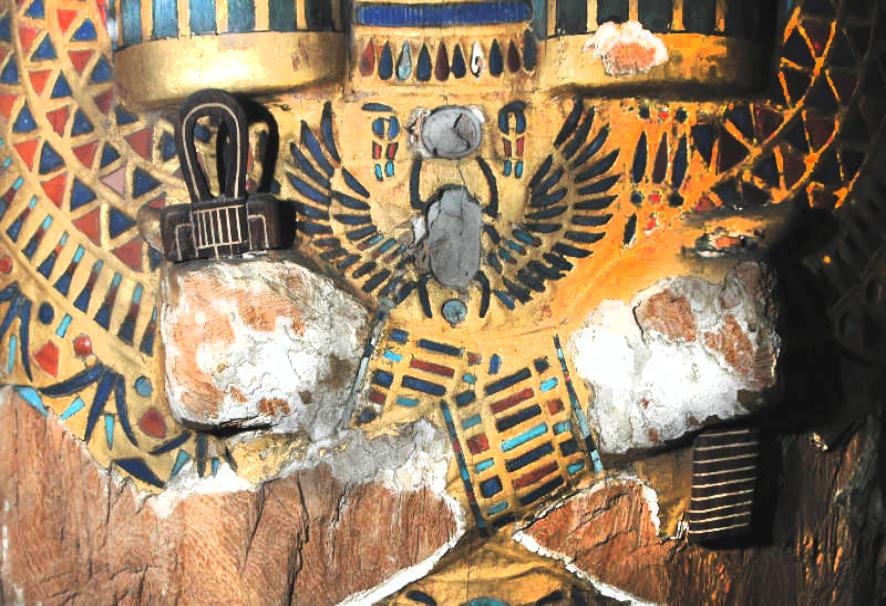| Russian Academy of Sciences Centre for Egyptological Studies, Moscow (CESRAS) & Russian Institute of Egyptology in Cairo (RIEC) Research on the Funerary Art of the 21a Theban Dynasty of Payanch and Personages of that Period (1070-945 BCE) HPA Pinodjem I, later King Khakheperre, ca. 1070-1025, 21a Dynasty, Thebes, Royal Cache An anciently plundered coffin of King Thutmose I was re-worked for his burial Cairo CG61025 Site Directory Personages Artifacts Iconography Coffins Directory Royal Cache TT320 Mummies Directory |
Intellectual property of the Russian Academy of Sciences, Centre for Egyptological Studies (CESRAS), Moscow R. F.: This material may be used freely for non-commercial purposes. It may not be altered in any manner by digital manipulation. If
you use it, please give us a credit. Should you have any questions or suggestions, please contact us at admin@cesras.org. We hope that you are enjoying your visit to our site and hope that you will come again soon. This is an "open-end"
project and there will always be something new. Original CESRAS Photographs by Research Fellows Sergej V. Ivanov and Edward R. Loring (Editor) (updated 21 Feb.2012/ERL/CESRAS)
you use it, please give us a credit. Should you have any questions or suggestions, please contact us at admin@cesras.org. We hope that you are enjoying your visit to our site and hope that you will come again soon. This is an "open-end"
project and there will always be something new. Original CESRAS Photographs by Research Fellows Sergej V. Ivanov and Edward R. Loring (Editor) (updated 21 Feb.2012/ERL/CESRAS)
Click on image for full
original b&w (Daressy)
original b&w (Daressy)
click on image for sepia
version of Daressy's plate
version of Daressy's plate
Inner coffin used for one re-burial of Pinodjem I.
His mummy was actually found in the coffin of
Queen Ahhotep II in the Royal Cache TT320.
Somehow the mummy has since been lost.
The images at left (before) and right (after) will
give you a small, rather innocent glimpse of the
joys punctuating a normal day's work of
research photography in many museums
shown on this CESRAS site. If there are any
light sources at all, they are of the sort that
produce the type of reflections seen here. For
lack of proper glass two pieces were joined
very cleverly in some past decade by means of
a strange metal object and some tape from the
office. There are many clever variations on this
theme. The fact that the glass is cleaned only
in emergency situations is perhaps to make the
objects appear more ancient and dead. The
average museum visitor comes to see gold
("King Tut" ) and dead humans (mummies). As
they tend to concentrate on that combination,
only a few wander by chance into the part of
the museum where we work.
Pictured here is the inner coffin made for the
early 18th Dynasty King Akheperkaraw
Tuthmosis I. who ruled between 1504 and
1492 BCE and was the first to be buried in the
Valley of the Kings' Tombs (KV).
Thutmoses' tomb was plundered in antiquity.
The gold surfaces of his coffins were adzed off
in what we call the "pious" manner, meaning
that certain symbols with religious importance
were left in place (see images at left below).
That is proof that the desecration was not the
work of later Arab tomb robbers who would
have had no respect for anything non-Islamic.
Below is Pinodjem's burial shroud, Cairo
JE-46881. Take note of his name written in a
royal cartouche near the bottom: pAynDm mry
jmnw
His mummy was actually found in the coffin of
Queen Ahhotep II in the Royal Cache TT320.
Somehow the mummy has since been lost.
The images at left (before) and right (after) will
give you a small, rather innocent glimpse of the
joys punctuating a normal day's work of
research photography in many museums
shown on this CESRAS site. If there are any
light sources at all, they are of the sort that
produce the type of reflections seen here. For
lack of proper glass two pieces were joined
very cleverly in some past decade by means of
a strange metal object and some tape from the
office. There are many clever variations on this
theme. The fact that the glass is cleaned only
in emergency situations is perhaps to make the
objects appear more ancient and dead. The
average museum visitor comes to see gold
("King Tut" ) and dead humans (mummies). As
they tend to concentrate on that combination,
only a few wander by chance into the part of
the museum where we work.
Pictured here is the inner coffin made for the
early 18th Dynasty King Akheperkaraw
Tuthmosis I. who ruled between 1504 and
1492 BCE and was the first to be buried in the
Valley of the Kings' Tombs (KV).
Thutmoses' tomb was plundered in antiquity.
The gold surfaces of his coffins were adzed off
in what we call the "pious" manner, meaning
that certain symbols with religious importance
were left in place (see images at left below).
That is proof that the desecration was not the
work of later Arab tomb robbers who would
have had no respect for anything non-Islamic.
Below is Pinodjem's burial shroud, Cairo
JE-46881. Take note of his name written in a
royal cartouche near the bottom: pAynDm mry
jmnw
HPA Pinodjem I (pAynDm) The profile above as shown on "his" outer coffin was made over 450 years
before his death for King Akheperkaraw Thutmosis I (aAxprkAraw DXtjmsjw) (1504-1492) whose initial
18th Dynasty burial, as were virtually all others, was plundered long before Pinodjem's era.
before his death for King Akheperkaraw Thutmosis I (aAxprkAraw DXtjmsjw) (1504-1492) whose initial
18th Dynasty burial, as were virtually all others, was plundered long before Pinodjem's era.
At left: standard cartouche
graphic; colours not
corrected: pAynDm mry
jmnw.
At right a cutout cartouche
from the leather funerary
baldachin of Isetemkheb B,
showing more canonical
colours (the pA bird is
generally blue and green), a
variant choice of the sign
for mr, but the same
reading, "Pinodjem loved
by Amun".
graphic; colours not
corrected: pAynDm mry
jmnw.
At right a cutout cartouche
from the leather funerary
baldachin of Isetemkheb B,
showing more canonical
colours (the pA bird is
generally blue and green), a
variant choice of the sign
for mr, but the same
reading, "Pinodjem loved
by Amun".
Lid of Pinodjem's (Thutmosis' I) inner coffin
At left is Pinodjem's cartouche as seen above in a better photo. At right is his royal title, KhaKheperraw.
(xaxprraw)The winged scarab deity Kheperj (xprj) stands on the Kha(xa) heiroglyph and holds the rising
red sun raw of the day. In the night, passing through a netherworld where the evil serpent anti-deity,
Apophis (Appj) tries to kill raw, the sun of night is shown as green. Green is an Osiride color, standing for
regeneration, the principle theme of Ancient Egyptian religious belief. Deities are often pictured with
green skin. The canonical colour of the scarab, or winged scarab is blue.
Below are close-up views of the symbols left in place by the initial "pious" plunderers.
All images are .jpg and can be downloaded for serious non-commercial use; click on an image for full size
(xaxprraw)The winged scarab deity Kheperj (xprj) stands on the Kha(xa) heiroglyph and holds the rising
red sun raw of the day. In the night, passing through a netherworld where the evil serpent anti-deity,
Apophis (Appj) tries to kill raw, the sun of night is shown as green. Green is an Osiride color, standing for
regeneration, the principle theme of Ancient Egyptian religious belief. Deities are often pictured with
green skin. The canonical colour of the scarab, or winged scarab is blue.
Below are close-up views of the symbols left in place by the initial "pious" plunderers.
All images are .jpg and can be downloaded for serious non-commercial use; click on an image for full size
The light blue of the circle, once containing a probably red stone of some value, is unusual.
"Canonical" blue inlay is seen at left. The ankh (anx) symbol was canonical blue, but has almost turned
green through reaction with yellow varnish. The cobra's head and "wings" are correctly blue, as are the
red stripes. Below these should be two green stripes. The body of the scarab was blue, probably lapis.
"Canonical" blue inlay is seen at left. The ankh (anx) symbol was canonical blue, but has almost turned
green through reaction with yellow varnish. The cobra's head and "wings" are correctly blue, as are the
red stripes. Below these should be two green stripes. The body of the scarab was blue, probably lapis.
Lid of outer coffin Lid of inner coffin
Daressey's black and white photos processed by E. Loring ; a
closer to the actual colouring of the adzed off coffins has been
brought out. No new colours have been added and no retouching
been done, although the head-dress was striped in blue and gold
Daressey's black and white photos processed by E. Loring ; a
closer to the actual colouring of the adzed off coffins has been
brought out. No new colours have been added and no retouching
been done, although the head-dress was striped in blue and gold
Below is the full outer coffin used for one of
Pinodjem's re-burials
Pinodjem's re-burials
Royal Cartouche of
"Paynedjem loved by Amun"
(pAynDm mry jmnw) from
the unique leather funerary
baldachin of Isetemkheb B,
daughter of HPA Masaharta
"Paynedjem loved by Amun"
(pAynDm mry jmnw) from
the unique leather funerary
baldachin of Isetemkheb B,
daughter of HPA Masaharta
Scroll right and down
Click here for mummy
Click here for burial remains
Pinodjem I (pAynDm), son of HPA
Piankh, (pAyanx) became HPA in
ca. 1070. In 1054 he assumed the
title of King Khakheperre
mery-Amun (xaxprraw mryjmnw)
which was recognized by the
Tanite King Smendes
I.(njswbAnbDdt mryjmnw) as a type
of co-king. Pinodjem's eldest
son, Masaharta (msAHartj),
became HPA, but predeceased
his father in ca. 1034.
Discounting the ephemeral
Djedkhonsefankh (Ddxnswjwfanx),
he was succeeded by HPA, later
"king" Menkheperre (mnxprraw),
son of Pinodjem and Queen
Duat-Hathor Henuttauy (dAt-HtHr
HnttAwj). Menkheperre's
pontificate of ca. 50 years
brought the dynasty to its
highest point. Nothing from his
and/or his wife's (Isetemakhbjt C
(AstmAxbjt), daughter of the
Tanite King Psusennes I
pAsbAxajnnjwt) burial(s) has ever
been found.
Click here for mummy
Click here for burial remains
Pinodjem I (pAynDm), son of HPA
Piankh, (pAyanx) became HPA in
ca. 1070. In 1054 he assumed the
title of King Khakheperre
mery-Amun (xaxprraw mryjmnw)
which was recognized by the
Tanite King Smendes
I.(njswbAnbDdt mryjmnw) as a type
of co-king. Pinodjem's eldest
son, Masaharta (msAHartj),
became HPA, but predeceased
his father in ca. 1034.
Discounting the ephemeral
Djedkhonsefankh (Ddxnswjwfanx),
he was succeeded by HPA, later
"king" Menkheperre (mnxprraw),
son of Pinodjem and Queen
Duat-Hathor Henuttauy (dAt-HtHr
HnttAwj). Menkheperre's
pontificate of ca. 50 years
brought the dynasty to its
highest point. Nothing from his
and/or his wife's (Isetemakhbjt C
(AstmAxbjt), daughter of the
Tanite King Psusennes I
pAsbAxajnnjwt) burial(s) has ever
been found.
What the visitor sees
What is behind the mess shown at left
